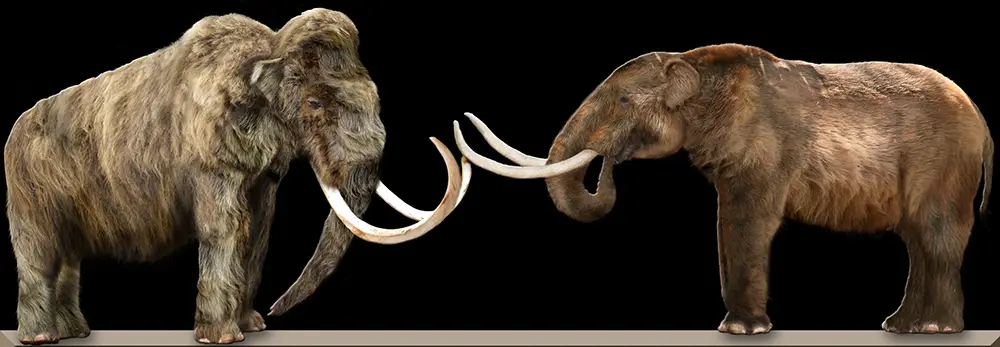According to research conducted by the University of Cincinnati, the fuzzy relatives of modern-day elephants liked living in Greater Cincinnati long before it became the trendy hot spot it is today- at the end of the last ice age. A study led by Brooke Crowley, an assistant professor of geology and anthropology, shows the ancient proboscideans enjoyed the area to such an extent that they probably resided there year round and were not the nomadic migrants as previously thought.
The research team has found that they even had their own preferred hangouts. Crowley’s findings indicate each species kept to separate areas based on availability of favored foods.
“I suspect that this was a pretty nice place to live, relatively speaking,” Crowley says. “Our data suggest that animals probably had what they needed to survive here year-round.”
The research that Crowley conducted with co-author and recent UC graduate Eric Baumann, “Stable Isotopes Reveal Ecological Differences Among Now-Extinct Proboscideans from the Cincinnati Region, USA”, was published in the international academic research journal, Boreas.

Could the Past save the Future?
Obtaining more information regarding the different behaviors of prehistoric animals has the possibility of benefiting the survival of their modern-day cousins, African and Asian elephants. Both species are on the World Wildlife Fund’s endangered species list. Studying how different types of elephants might have been in the past, Crowley says, might help ongoing efforts to protect these large land mammals from continued threats such as poaching and habitat destruction.
“There are regionally different stories going on,” Crowley says. “There’s not one overarching theme that we can say about a mammoth or a mastodon. And that’s becoming more obvious in studies people are doing in different places. A mammoth in Florida did not behave the same as one in New York, Wyoming, California, Mexico or Ohio.”
The Wisdom in Teeth
During their research Crowley and Baumann looked at the wisdom in teeth- specifically museum specimens of molars from four mastodons and eight mammoths from Southwestern Ohio and Northwestern Kentucky. Carefully drilling a tooth’s surface and proceeding to analyse the stable carbon, oxygen, and strontium signatures in the powdered enamel can reveal a lot of information.
Each of these elements conveys a different story. Carbon exposes insight into an animal’s diet, oxygen relates to overall climatic conditions of an animal’s environment and strontium indicates the amount of travelling an animal undertook whilst the tooth was developing.
“Strontium reflects the bedrock geology of a location,” Crowley says. “So if a local animal grows its tooth and mineralizes it locally and dies locally, the strontium isotope ratio in its tooth will reflect the place where it lived and died. If an animal grows its tooth in one place and then moves elsewhere, the strontium in its tooth is going to reflect where it came from, not where it died.”
The in-depth analyses allowed the researchers to determine several things including the different diets of mammoths and mastodons; mammoths typically consumed more grasses and sedges than mastodons, who preferred leaves from trees or shrubs.
One of their key findings however, was that the strontium from all the specimens studied, except one mastodon, matched local water samples, suggesting they were less mobile and migratory than previously thought. This was coupled with the discovery that there were differences in strontium and carbon between mammoths and mastodons, which implies they did not reside in the same localities.
Contributing Source: University of Cincinnati
Header Image Source: WikiPedia




